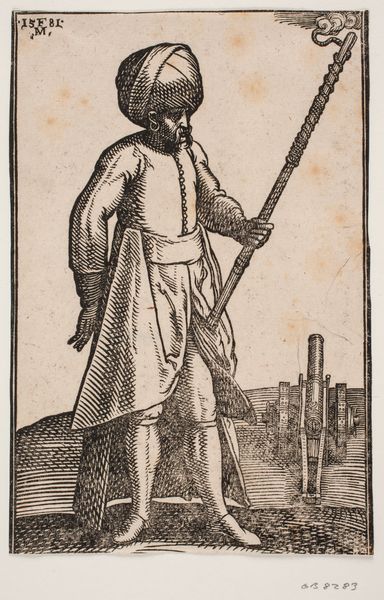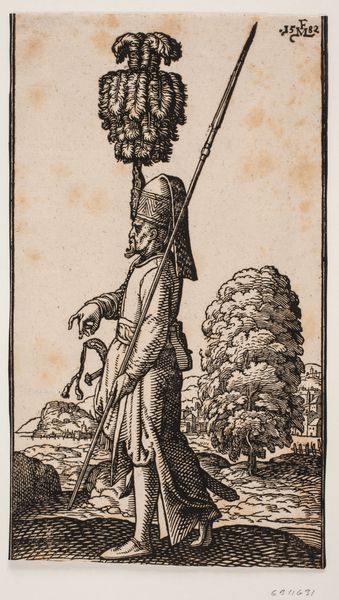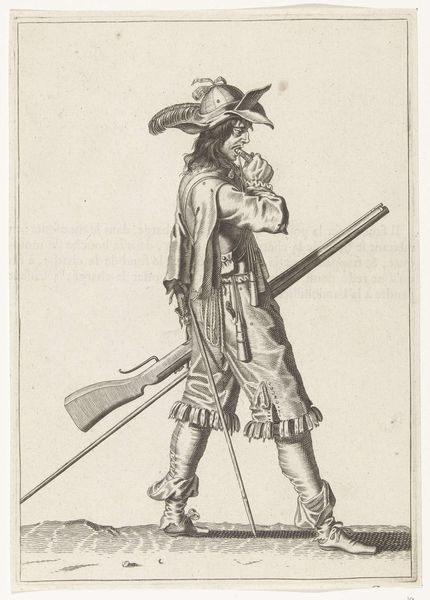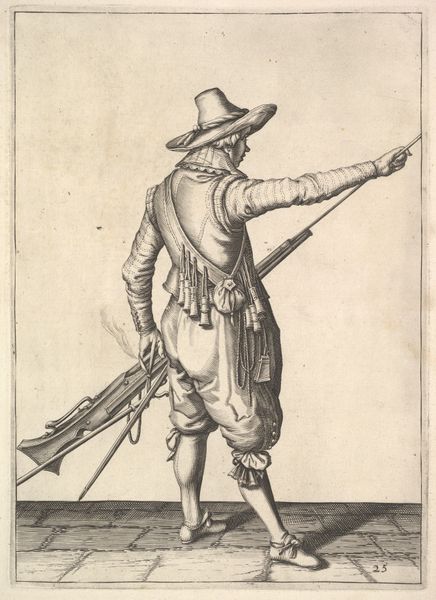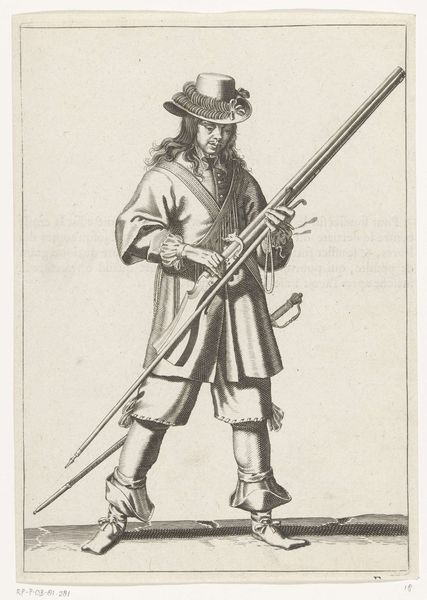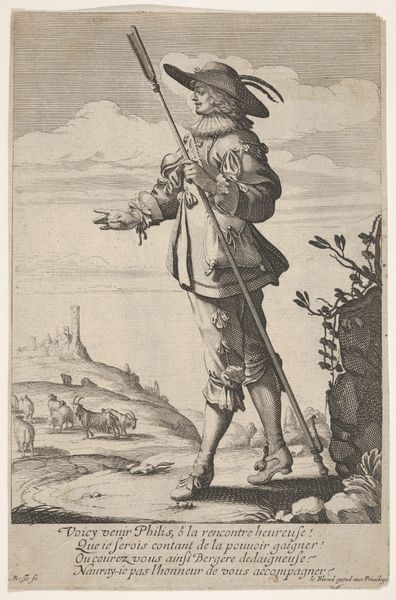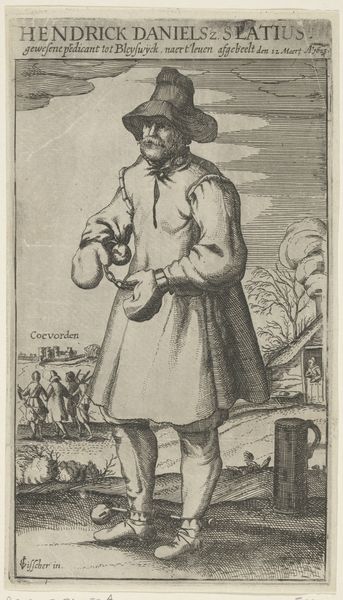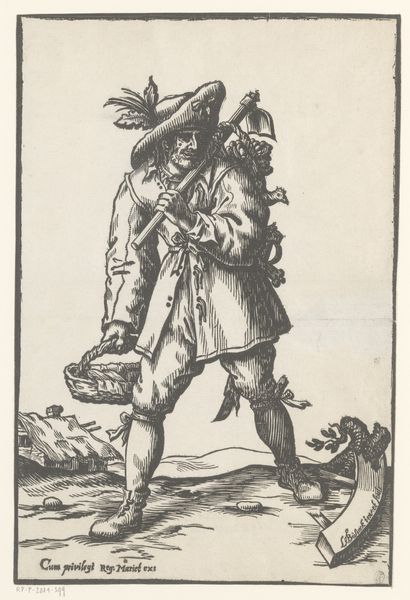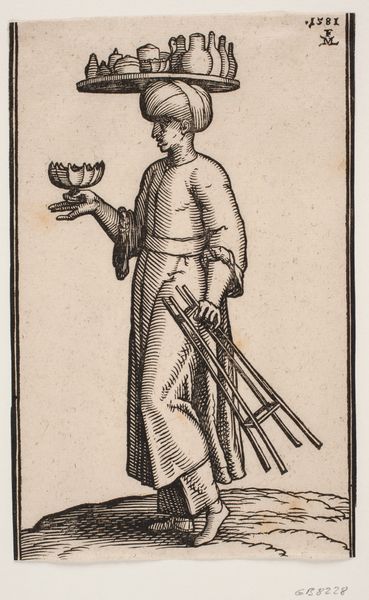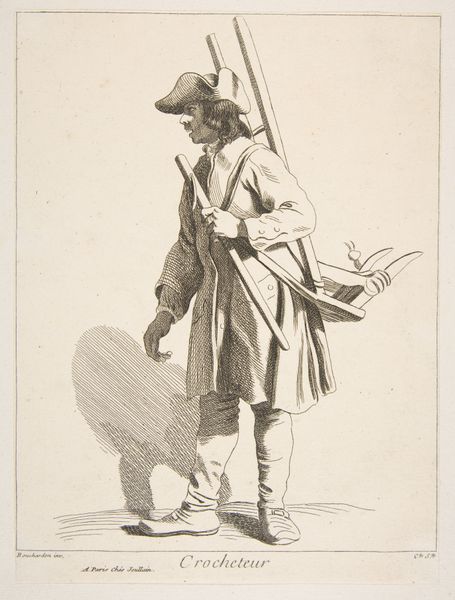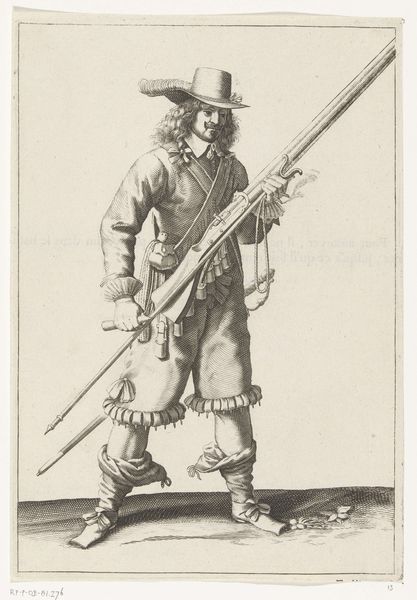
print, woodcut
#
portrait
# print
#
woodcut
#
genre-painting
#
northern-renaissance
Dimensions: 200 mm (height) x 132 mm (width) (bladmaal)
Curator: This woodcut, created in 1581 by Melchior Lorck, is titled "Greek Peasant Holding a Scythe in his Right Hand." It resides in the Statens Museum for Kunst. What's your initial reaction? Editor: Striking! The stark contrast of the lines immediately draws my eye. There's a formal stillness to the peasant's pose that belies the labor suggested by the scythe. The details, though, are where it really captures me. Curator: The density of lines, typical of woodcut prints, emphasizes texture. Note how Lorck uses varied marks to depict the rough fabric of his clothing and the weave of the impressive conical hat, juxtaposed with the smoother cloak and the gleaming blade of the scythe. Considering the tools required and physical labor to cut these blocks of wood for printing is always noteworthy. Editor: I agree about the textural effect and admire his commitment to detail in this Northern Renaissance piece. The parallel lines create a kind of graphic energy but contained. Did Lorck intend to capture something specific about the cultural or social role of peasants during this era through line and form? Curator: Absolutely. Lorck travelled extensively, particularly in the Ottoman Empire, and his depictions of local populations were quite meticulous, influenced by a Humanist desire to catalogue and understand different peoples through their dress and customs. The woodcut as a medium allowed for broader circulation, facilitating knowledge, while also highlighting class. Woodcuts could be reproduced and reach much more than one painting, for instance. Editor: The figure dominates the composition. The slight landscape grounds him, while also isolating him. One might analyze this in terms of early semiotics; his clothes, tools, even the tree act as signifiers pointing toward ideas of labor, identity, and land ownership, maybe even nationhood, given its title. Curator: Considering that printed images could circulate much more broadly than individual paintings, and were also, generally, more affordable to a broader population, thinking about how images of class were consumed becomes crucial for understanding the cultural role of the printing press during this era. Editor: Precisely. Lorck's understanding of form really elevates a piece that one might otherwise simply classify as genre painting or portraiture. Curator: Indeed. Viewing this through the lens of material conditions adds layers of complexity to this portrayal. Editor: An astute observation. His choices elevate "Greek Peasant Holding a Scythe" beyond a mere representation of rural life.
Comments
No comments
Be the first to comment and join the conversation on the ultimate creative platform.

